How to Make Perfect Cafetiere Coffee
Picture a crisp, Sunday morning. The sun is slowly rising, dew rests on the grass and you’ve got nowhere to be. First things first, grab your dressing gown from the back of the door. Now make your way into the kitchen to make the perfect cup of fresh coffee.
In our opinion, you can’t beat a freshly brewed cafetiere on mornings like that. Everything is less hectic, and you’ve got more time to enjoy life’s moments. Slow down, take the plunge and treat yourself to the perfect cafetiere coffee…

When it comes to using a cafetiere, also known as a French press, there are a few things you should remember to make sure you get it right. The last thing you want is bitter tasting coffee that’s been left to extract for far too long. On the other hand, you might find your cafetiere coffee is too weak and there seems to be more sediment than you were expecting.
Don’t worry, in this blog we’ll go through the basics of how to use a cafetiere to make the perfect cup of coffee. We’ll talk about grind size and the perfect roast, as well as some cleaning tips. We'll even tell you where to buy replacement glass for your coffee press if there’s an accident.
If you think you’ve mastered the perfect cafetiere coffee, take a look at this coffee press brewing guide. In here you’ll find new ratios and recipes to shake up your Sunday morning routine. For now though, let’s take a look at the basics.
How Much Coffee Should you put in a Cafetiere?
When brewing with a cafetiere, the perfect ratio is 15g of fresh ground coffee to every 250ml of water. It’s always worth experimenting a bit to find out exactly what you like, but this is a good place to start.
The amount of coffee you put into your French press will depend on what size you’ve got. Previously, 8 cup cafetieres were the most popular size for people to have at home. These make around 3 normal sized mugs of coffee, typically around 1L.
Today, more and more people are switching to single-serve options to use at home and work. Our small cafetiere makes one 350ml mug of coffee.
If we’re aiming for 15g of ground coffee for every 250ml of water, you’ll need 21g for a small cafetiere and 60g for a large cafetiere. You can get scales to weigh out the perfect amount, or use a coffee scoop spoon to measure straight out the bag!
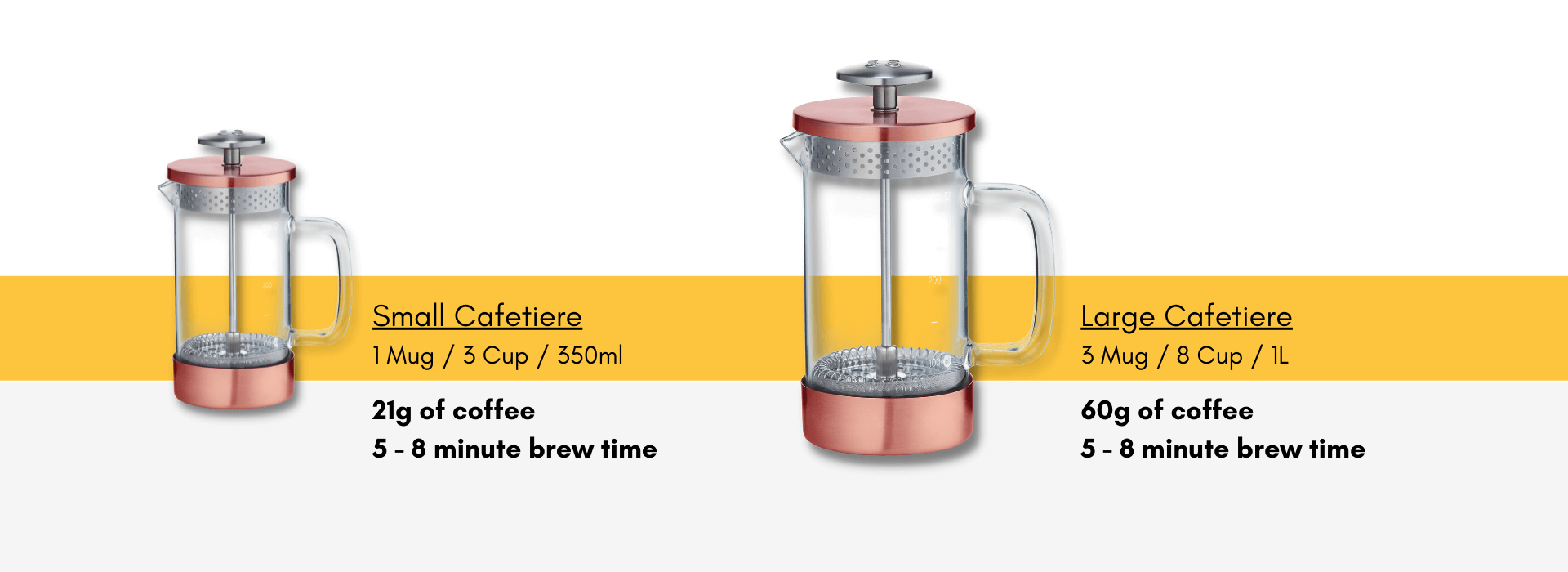
How Many Spoons of Coffee in a Cafetiere?
Our coffee measuring spoons are double-ended to make it even easier to measure the right amount of fresh ground coffee into your cafetiere. At one end, you’ll get the perfect 15g scoop for a single mug of coffee. At the other end, you’ll get a 30g scoop which is just right if you both want to enjoy a cafetiere on your lazy Sunday morning.

If you’re using a 3 cup coffee press, you’ll want to put about 1 and a half spoons into the beaker to make a brew. If you’re using an 8 cup coffee press then 60g is the perfect amount of coffee, so 2 scoops from the larger end of our measuring spoon will do the trick.
How Long Should you Leave a Cafetiere to Brew?
Once you’ve mastered how much coffee you should put in your cafetiere, you need to think about brewing time. This is another thing you’ll want to experiment with. It entirely depends on how you like your coffee.
We think the ideal cafetiere brewing time is anywhere between 5 – 8 minutes. The longer you brew, the stronger the flavours of your final cup will be. Remember, the strength of the brew doesn’t correlate with the amount of caffeine in your cup.
What Coffee do you put in a Cafetiere?
To get the best results, you should always use freshly ground coffee when you’re using a cafetiere. If you haven’t got a grinder at home, your local roaster will be able to grind whole beans to your requirements. Make sure you keep any pre-ground coffee in an airtight container to keep it fresh for as long as possible.
In terms of grind size and roast, there are some things you’ll want to consider when attempting to make the perfect cafetiere coffee:
Grind Size:
Finding the right grind size is really important when making coffee in a cafetiere. Too fine, and the grounds will over-extract and slip through the filter into your mug. The best grind size for cafetiere coffee is medium course.

If your coffee is bitter and tasteless, it’s likely that it’s been ground too fine and is over extracting. Change the settings on your coffee grinder slightly and keep trying until you’ve got a flavour you love.
Roast:
When deciding on the best coffee beans for your cafetiere, a lot of the decision process comes down to personal preference. Think about an independent café you go to that serves brilliant coffee. Ask them where they get their beans from and how they’re roasted. Then look for a local roastery that offers a similar style.
My personal favourite is this light roast from Mexico, available in medium-coarse grind which is perfect for cafetiere coffee. One of the best things about using a coffee press is you are in full control of the extraction time. Although this can be a struggle if you’re experimenting with new coffee beans.
Light roast coffee offers a wider range of delicate flavours and aromas. There's also none of the bitterness you expect from dark roasted coffee beans. When it comes to a cafetiere, you have full control over the extraction time (how long the coffee is left brewing in the water). You can experiment with exciting, new flavours that you wouldn’t expect such as black forest gateaux, caramel or black pepper.
How Can I Make my Cafetiere Coffee Taste Nicer?
If you are struggling to make the perfect cup of coffee in your cafetiere, it could be down to a few things:
- You don’t like the beans you are using
- Your brewing time is off
- Your coffee is ground too finely
- You don’t like the style of coffee immersion brewing produces
The first thing to do is try different beans. Freshly roasted beans will always be better and if you can grind fresh at home then do it! You’ll notice a huge improvement in the taste.

If your coffee is too strong or too weak, your brewing time is probably off. Something we see a lot is people leaving a large cafetiere brewing over a long time – never do this! Find your perfect brew time (between 5 and 8 minutes) and then slowly pour your coffee. If you’ve made too much for one mug, make sure you decant into a different jug to stop the brewing process.
We don’t blame you for not liking cafetiere coffee if your beans are ground too finely. Not only will your mouth be full of sediment, but it will likely be bitter and tasteless. Try a medium-coarse setting on your grinder and see if that helps.
If you’ve tried different coffees and these methods aren’t making a difference to you, maybe you just don’t like cafetiere coffee. There are loads of methods when it comes to brewing fresh, and immersion brewing (using a coffee press) is just one of them.
Our coffee maker quiz has been created to help people like you choose the right bit of kit for the style of coffee they like to drink. Answer four questions and we’ll tell you which coffee maker is the best for you.







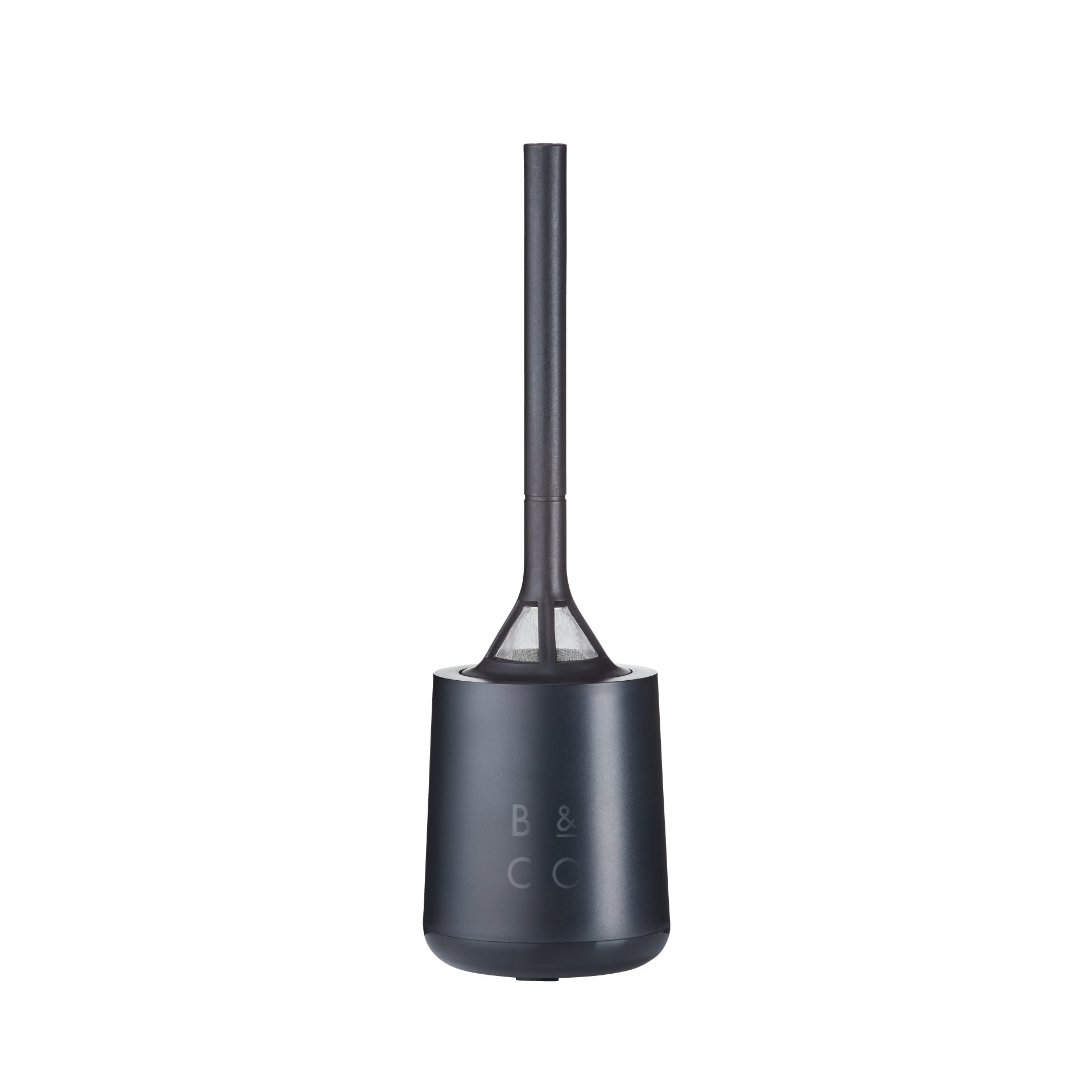


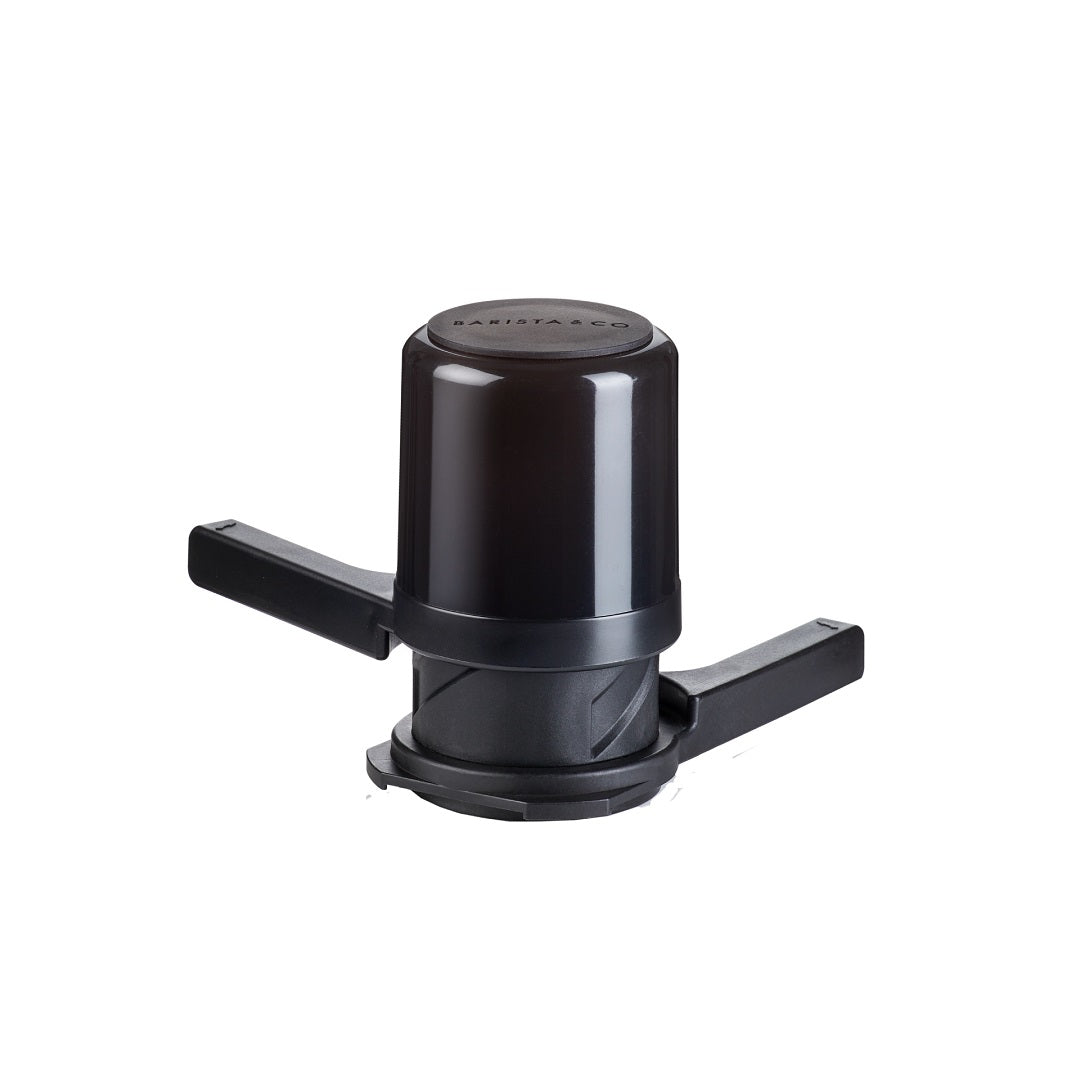


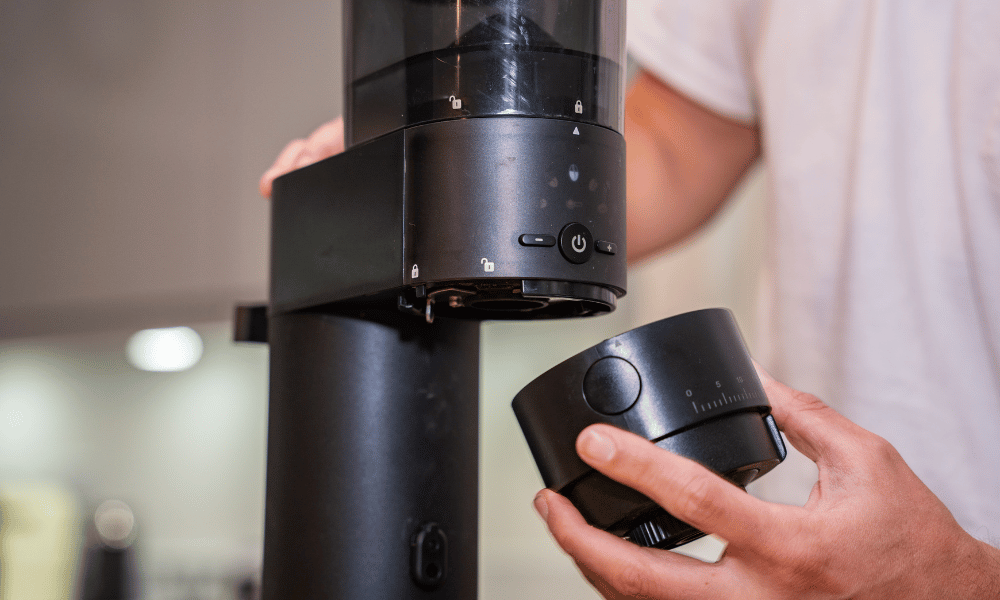


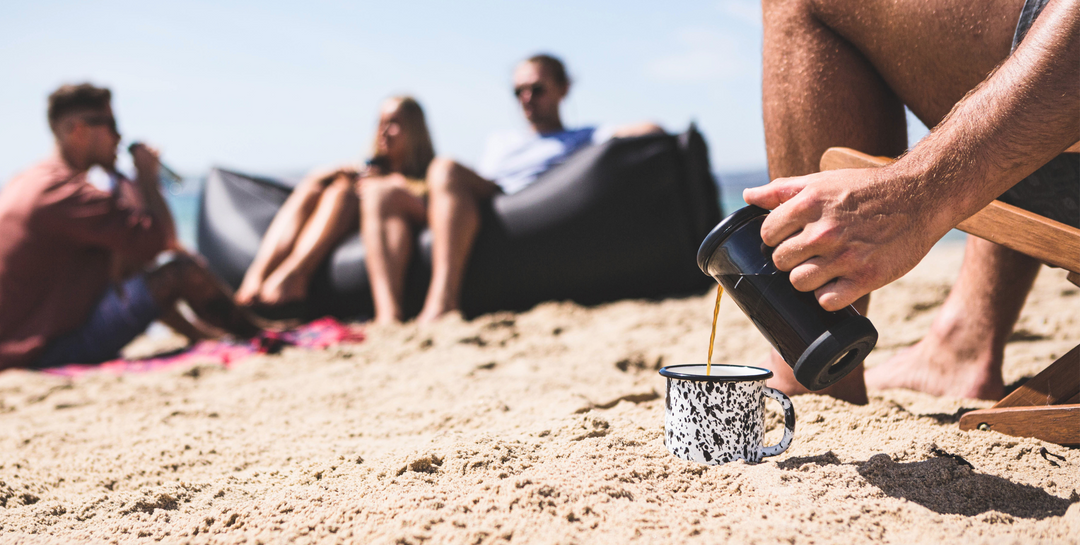
Leave a comment